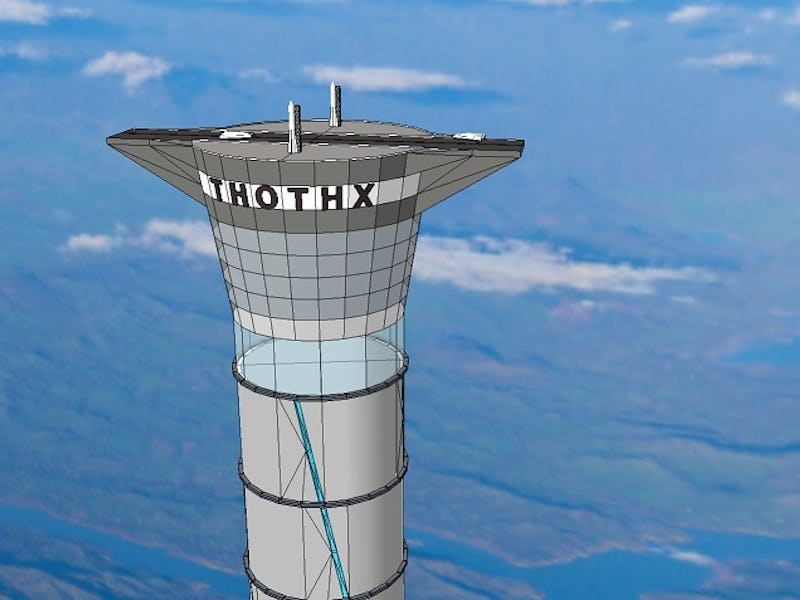How Thoth Technologies Plans to Build a Space Elevator
Is a space elevator that doesn't go all the way up still a space elevator?

The space elevator has been a near-future science fiction mainstay since Arthur C. Clarke popularized the idea in his 1979 novel The Fountains of Paradise, though its proposed origin dates back to 1895 and possibly earlier. A tether linking a counterweight in geosynchronous orbit would stretch some 35,800 km into space, meaning travel beyond Earth’s gravity would take a fraction of the energy. (It’s a lot easier to get high off the ground by climbing a rope than by hopping.) Well, the new space elevator design recently patented by Thoth Technologies is not that. Not exactly.
It will be a space step-stool that stretches 12 km into the sky; and space elevator patents are a dime per 288 (by last USPTO search) whereas the Thoth stool will cost on the order of $10 billion. But it is a pretty nifty idea. At the mass of a supertanker and 14.5 times the Burj Khalifa’s height, it would redefine what tall buildings mean. Suck it, Babel.
The immediate spacefaring advantages are a 30 percent reduction in fuel. It would essentially eliminate the first stage of a multistage rocket, Brendan Quine, the space stepladder’s brainparent and the chief technical officer of Thoth Technologies, told Inverse. Because conventional rockets drop their stages into the ocean, they are inherently environmentally unfriendly, never mind the fuel impact.
Why not go for the tether? No one has invented a material strong enough, says Quine, and you also have the problems of micro-meteorites and lightning. “At 50,000 kilometers long, it would wrap itself around the planet twice if it broke.” The more modest, stratosphere-piercing Thoth tower would be built of 12 km of compressed gas cells, pumped to 100 times atmospheric pressure. Construction would be modular — 200-m sections stacked on top — or extruded from the bottom up like a 3D printer. To contend with winds up to category-5 hurricane level, Quine says a computer-controlled system of actuators would allow the tower to roll with the motion of the Earth. Researchers at York University, where Quine teaches, calculated that one degree of lean would be sufficient to brace into a cat-5 ‘cane.
“SpaceX is an obvious choice,” he says regarding finding a corporate partner. But when you’re so high up in the sky, why put space tourism or reusable rockets at the limit? Quine sees opportunities for sightseers of the Earth-bound kind — only 800 people have looked out at the view that 12 km up affords. “We could get more than a million people in a year,” says Quine, with hotels and restaurants at the end of the Earth. Use the tower to stream high-speed data to a continent, and while you’re at it, tack on four 300-meter-in-diameter turbines to churn in high-altitude winds, and you have renewable energy generation on par with a nuclear reactor.
Of course, it’s easy to talk big on paper, even in the files of the USPTO. But Quine is optimistic about his giant gravity-defying baby: The Thoth tower has been covered in more than 200 articles in 20 languages, and he says he doesn’t think “anybody’s found a serious problem with it yet.” Except that it’s not, technically speaking, a space elevator.